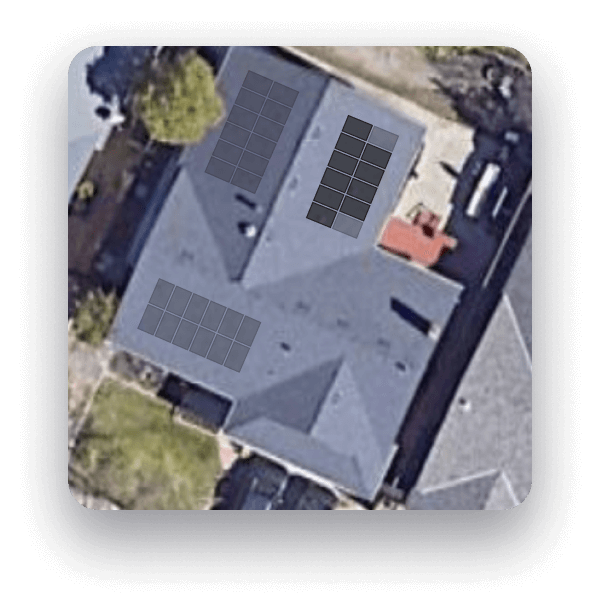Here's how your panels fare when rain, snow, sleet, or wind roll into town.
A common question we receive from homeowners ready to go solar is whether the weather is going to negatively impact the efficiency of their solar system. The short answer is no. Weather matters, but not as much as you might think.
As sleek as your solar panels look, they are built to be durable and to last for many years. Monalee homeowners will have LONGi 400w installed on their homes. LONGi panels feature advanced cell technology, high performing modules, and are able to withstand high snow and wind conditions.
What matters most is the amount of sunlight your panels receive per day. This will vary depending on the season and your local weather conditions. The good news is that your panels only need a few hours of strong sunlight to power your home.
Here’s what to know about solar panels in spring, summer, fall, and winter.

Sunny days
When it comes to solar, it’s the number of hours of sun–rather than how hot or cold it is outside–that matters. This means that a few hours of sunlight in the summer is just as powerful as a few hours of sunlight in the winter months.
That said, in summer, you’re going to have more hours of sunlight than you would during fall and winter. A sunny day in summer is going to give you a lot of excess energy that you can then store in your battery (if you have one) and can sell to your local grid in exchange for credits to use at a later time. Learn more about the benefits of net metering–or NEM–here.
While winter has fewer hours of strong sunlight than during the long days of summer, you will usually have more than enough energy to power your home without using energy from your battery, although that’s always an option.
Fun fact: When we’re designing your solar system, we take many factors into consideration, including the navigational direction your roof is facing. For example, a roof in the northern hemisphere that faces south will get the most sun and therefore will be the most efficient).

Rain and clouds
As long as the sun is out, your solar system will convert sunlight into electrical power. This is true for both direct sunlight and indirect sunlight, such is the case when it rains or is cloudy. If you’ve ever had the misfortune of getting sunburned on a cloudy day, you know just how powerful the sun is even when hidden behind the clouds.
The same is true for rain and in fact, rain serves as a natural cleaning agent for your panels. Especially for panels that are installed at an angle–rather than flat–the rain hits your panels and can help wash natural debris away. The cleaner your panels are, the better they operate. As we noted here, you’re looking at maybe a 5-percent decrease in performance when rain, wind, or clouds interfere.

Fall foliage
Fall can be a tricky season for homes that have a lot of trees near their roof. Of course, we consider this early in our process, and work around this to ensure that you will receive the optimal amount of sunlight regardless of trees or other structures that might cast the panels in shade throughout the day.
For areas that receive a lot of natural rain throughout the fall season, you’re in luck. As we noted above, rain can wash away a lot of the fallen leaves and other natural debris that can accumulate under and around your panels. Otherwise, we recommend hiring a professional to safely clean your panels.

Snow and sleet
As we’ve covered thus far, rain and clouds don’t negatively affect how much energy your solar system produces. As long as you have a few hours of strong sunlight each day, you will generate enough power to charge your home. The one exception to this is snow. If there is snow covering your panels, your system will not produce much power.
The pitch of your panels plays a role in how much power you can generate and flat panels tend to get more buildup and grime. Pitch refers to the degree that your roof slopes, and panels that are installed at a slant almost act like a draining system. When snow falls on panels at an angle, it has the chance to slide off the side before it can freeze.
If you live in an area that receives a lot of snowfall or below freezing temperatures, put a system in place that allows you–or a professional trained in maintaining solar panels–to regularly check on them.
In a perfect world, any day that you don’t generate enough energy, you can tap into your storage battery. This is what homeowners also do at night, when their panels are not receiving enough energy from the sun. If you’re wondering whether it’s smart to invest in a dedicated storage battery, here are some pros and cons to consider.


























